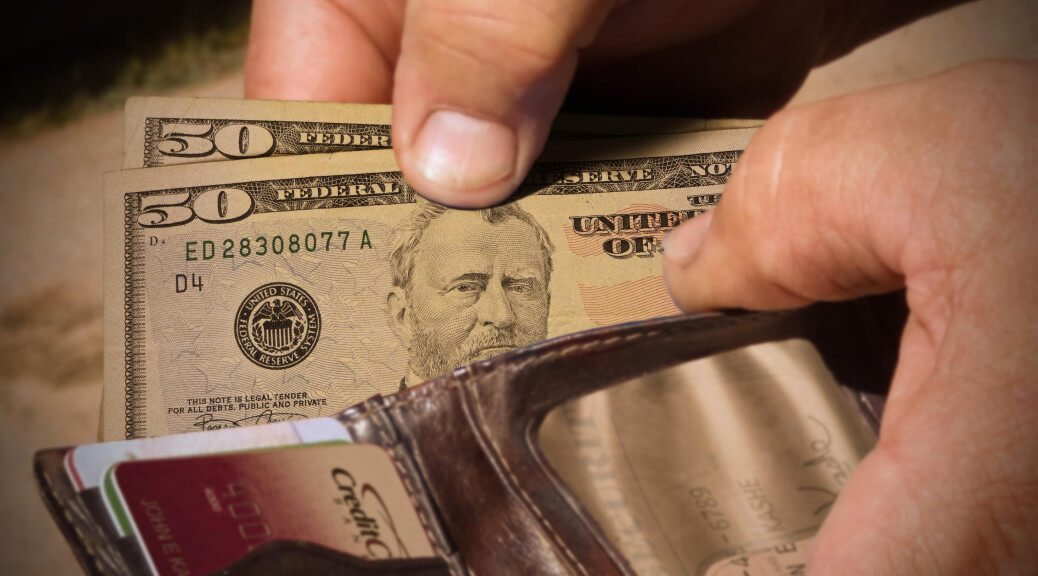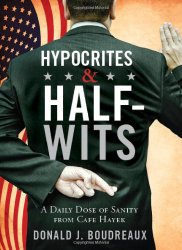
…or How I Learned to Stop Worrying and Love Inequality.
David R. Henderson is a research fellow at Stanford University’s Hoover Institution, and a professor of economics at the Graduate School of Business and Public Policy, Naval Postgraduate School, in Monterey, California.
Thomas Piketty’s Capital in the 21st Century managed to do something unprecedented among equation-dense economic tomes, it became the #1 selling book on Amazon.com. The book tapped in to a hot topic among politicians and the general public: the high (and possibly rising) wealth and income shares of the top 1%. However, David points out that although the book was a best-seller, it wasn’t actually a best-reader. Amazon logs the sentences people highlight, and the top five most-highlighted sentences in Capital all appear in the first 26 pages. It seems that, at least among kindle readers, most people didn’t make it past the introduction. It appears that people buy the book to back up the views they already hold.
David thinks that the huge interest in economic inequality in general and the wealth of the 1% in particular was sparked in the 1990s by politicians, including Al Gore, and picked up by journalists like Sylvia Nasar, before influencing the economics debate. Piketty has been able to ride this wave of public interest at what appears to be its crest.
David distinguishes between inequality of wealth, inequality of income, and inequality of power. Income inequality is the difference in the amount of income we each take in in wages, interest, dividends, and government transfers (e.g. welfare or social security payments), the four main sources of income for most people. Wealth should ideally include the total value of a person’s assets in addition to the stream of income he is likely to earn in the future, though this stream is more often ignored in wealth statistics. Wealth inequality is not the same as income inequality. Critically, since people earn variable income throughout their lives, income inequality doesn’t capture what we think of as the gap between “rich” and “poor.” Retired people who own two-million-dollar homes might have low incomes, but they certainly aren’t poor. Or, to use an example that’s relevant to myself, as a PhD student my income probably sits in the bottom quintile, and yet I can expect a much higher income after I graduate.
The major factor in both income inequality and wealth inequality (measured by current assets and not expected earnings) is age. Teenagers earn little or nothing, but they grow into adults and gain skills and education, their incomes rise, and they gain wealth through savings. Even if everyone had the same lifetime earnings, there would still be significant inequality in any given year since some people would be young low-earners, while others would be older, wealthier high-earners. And since the older people would have had the chance to accumulate wealth over a lifetime, they would have twenty times the wealth of their younger counterparts.
While there is a correlation between wealth and power, that correlation is by no means perfect. David gives the example of Bill Gates who discovered the hard way that when you have too little political influence, it can be costly. Gates was hit with a long and costly antitrust suit, after which he greatly expanded his lobbying efforts; he had learned his lesson. David agrees with Joseph Stiglitz’ argument, to some extent, that large accumulations of wealth are the result of rent seeking. Local governments restrict the building of new homes and developments that could expand the supply of housing. Thus, they keep real estate prices artificially high to the benefit of those who already own their homes. This is an example of successful rent seeking by homeowners to the detriment of non-homeowners. However, while Stiglitz would argue that this justifies a higher tax rate on the wealthy, David prefers the more direct solution of simply reducing or removing these restrictions.
The following are also mentioned in this episode:
- Wealth Inequality in America
- Piketty and Saez vs. Burkhauser and Cornell: Who’s right on income inequality and stagnation?
- Income and Wealth by Alan Reynolds
- The Boskin Commission
- Myths of Rich and Poor by W. Michael Cox and Richard Alm
- Mark J. Perry on individual income inequality
- Greg Mankiw’s favourite textbook
- Bernie Madoff
- The McCulloch chainsaw
- Lyndon B. Johnson
- David’s review of Capital in the 21st Century for Regulation
- David’s (unexpectedly) controversial EconLog post about ordinal utility
- Robert Solow’s review of Capital in the 21st Century
- Matthew Rognlie’s response to Piketty and Randal O’Toole’s comment on Rognlie’s response
- Branko Milanovic’s blog on global inequality
- David’s article on The Bottom One Percent
- Peter Jaworski
- Is Government the Source of Monopoly? by Yale Brozen
Subscribe to Economics Detective Radio on iTunes or Stitcher.
The post Income and Wealth Inequality with David R. Henderson appeared first on The Economics Detective.


